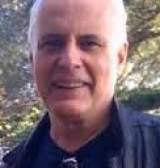By Alexis Blue
University Communications | May 23, 2013
Eighteen students are heading to Italy this summer to learn about the Mediterranean diet and its health benefits.

TOP: Students will spend three weeks in Verona, Italy.
MIDDLE: UA students will get hands-on cooking experience, working with students and instructors at an Italian cooking school. (Photo by Gianni Martini)
BOTTOM: The Mediterranean diet, represented in this food pyramid, is rich in olive oil, fish, whole grains, and fresh fruits and vegetables.
MIDDLE: UA students will get hands-on cooking experience, working with students and instructors at an Italian cooking school. (Photo by Gianni Martini)
BOTTOM: The Mediterranean diet, represented in this food pyramid, is rich in olive oil, fish, whole grains, and fresh fruits and vegetables.
Made-from-scratch
pasta, fresh mozzarella, whole-grain bread and savory olive oil – those
are the kinds of items you might expect to see on a menu in a fine
Italian restaurant, but on a University of Arizona science class
syllabus? You can find them there, too, if you're among the lucky
students taking part in the UA's new Mediterranean Diet and Health study
abroad program.
This week, 18 students will head to Verona, Italy as part of the inaugural program, which was created by Donato Romagnolo, professor in the department of nutritional sciences in the UA College of Agriculture and Life Sciences, to teach students about the health benefits of the Mediterranean diet. Students in the program have diverse academic backgrounds in disciplines including nutritional sciences, dietetics, public health, biology, physiology and more.
A native of Padova, Italy, Romagnolo wanted to create a study abroad program that would expose students to the traditional diet and lifestyle habits of his native country while emphasizing the link between nutrition and health.
"The evidence is there that the Mediterranean diet has protective effects against a number of chronic diseases, and that includes cardiovascular diseases, cancer, Alzheimer's and diabetes," said Romagnolo, who also is a professor of nutritional biology and a member of The University of Arizona Cancer Center and BIO5 Institute.
"In the U.S., we are dealing with a growing population of people who are overweight, about 68 percent, and obese, 34 percent, and the number of people with diabetes has been increasingly steadily since mid-'90s. These are nutrition-related diseases," he said.
The science-based Mediterranean Diet and Health program began this month on the UA campus, where students completed a week-and-a-half of classroom work in preparation for their trip abroad. They have been learning about the various components of the Mediterranean diet as well as the diet's role in disease prevention.
Lectures will continue in Verona, where students also will get hands-on experience making meals under the guidance of students and instructors from La Cucina di Casa, a nonprofit, traditional cooking school that emphasizes everyday cooking practices and blending of Mediterranean foods into easy-to-prepare dishes.
Rich in olive oil, fish, whole grains, and fresh fruits and vegetables, and low in refined sugars, the Mediterranean diet was recognized by UNESCO in 2010 as an Intangible Cultural Heritage of Italy, Greece, Spain and Morocco.
During their three-week stay in Italy, students will get first-hand exposure to the Mediterranean diet and its components by visiting an olive oil processing plant, pasta factory, cheese factory, rice plantation and grape farm to learn how various foods are made, processed and stored.
"Students will have the opportunity to see how foods are prepared and actually participate," Romagnolo said.
The Mediterranean Pyramid is not just about food; it's also about lifestyle, Romagnolo notes. Behaviors like regular exercising, incorporating wine – which can have certain health benefits – in moderation with meals, and eating smaller portion sizes are key.
Skylar Tigert, a UA senior majoring in nutritional sciences, said she looks forward to learning cooking tips from the pros and hopes she will learn new culinary skills to help her improve her diet at home.
"I've been interested in learning about the Mediterranean diet for a long time, and its role in cancer prevention really intrigues me," Tigert said. "It's important that we learn as much as we can so we can bring it back to the states U.S. and to our friends and families to help impact their health."
Students will film their experiences and create personal documentaries on what they learned about diet and culture.
The six-credit Mediterranean Diet and Health program is open to UA students of all majors, as well as out-of-state students and non-students with some background in biological, biomedical or public health sciences.
"The idea behind the program is: What can we do as faculty to educate students about possible alternatives and solutions to some of the health problems we are facing?" Romagnolo said. "That's our mission, and we hope we can make a little dent in changing the way students and the general public relate to food for the prevention of chronic diseases such as obesity, diabetes and cancer."
This week, 18 students will head to Verona, Italy as part of the inaugural program, which was created by Donato Romagnolo, professor in the department of nutritional sciences in the UA College of Agriculture and Life Sciences, to teach students about the health benefits of the Mediterranean diet. Students in the program have diverse academic backgrounds in disciplines including nutritional sciences, dietetics, public health, biology, physiology and more.
A native of Padova, Italy, Romagnolo wanted to create a study abroad program that would expose students to the traditional diet and lifestyle habits of his native country while emphasizing the link between nutrition and health.
"The evidence is there that the Mediterranean diet has protective effects against a number of chronic diseases, and that includes cardiovascular diseases, cancer, Alzheimer's and diabetes," said Romagnolo, who also is a professor of nutritional biology and a member of The University of Arizona Cancer Center and BIO5 Institute.
"In the U.S., we are dealing with a growing population of people who are overweight, about 68 percent, and obese, 34 percent, and the number of people with diabetes has been increasingly steadily since mid-'90s. These are nutrition-related diseases," he said.
The science-based Mediterranean Diet and Health program began this month on the UA campus, where students completed a week-and-a-half of classroom work in preparation for their trip abroad. They have been learning about the various components of the Mediterranean diet as well as the diet's role in disease prevention.
Lectures will continue in Verona, where students also will get hands-on experience making meals under the guidance of students and instructors from La Cucina di Casa, a nonprofit, traditional cooking school that emphasizes everyday cooking practices and blending of Mediterranean foods into easy-to-prepare dishes.
Rich in olive oil, fish, whole grains, and fresh fruits and vegetables, and low in refined sugars, the Mediterranean diet was recognized by UNESCO in 2010 as an Intangible Cultural Heritage of Italy, Greece, Spain and Morocco.
During their three-week stay in Italy, students will get first-hand exposure to the Mediterranean diet and its components by visiting an olive oil processing plant, pasta factory, cheese factory, rice plantation and grape farm to learn how various foods are made, processed and stored.
"Students will have the opportunity to see how foods are prepared and actually participate," Romagnolo said.
The Mediterranean Pyramid is not just about food; it's also about lifestyle, Romagnolo notes. Behaviors like regular exercising, incorporating wine – which can have certain health benefits – in moderation with meals, and eating smaller portion sizes are key.
Skylar Tigert, a UA senior majoring in nutritional sciences, said she looks forward to learning cooking tips from the pros and hopes she will learn new culinary skills to help her improve her diet at home.
"I've been interested in learning about the Mediterranean diet for a long time, and its role in cancer prevention really intrigues me," Tigert said. "It's important that we learn as much as we can so we can bring it back to the states U.S. and to our friends and families to help impact their health."
Students will film their experiences and create personal documentaries on what they learned about diet and culture.
The six-credit Mediterranean Diet and Health program is open to UA students of all majors, as well as out-of-state students and non-students with some background in biological, biomedical or public health sciences.
"The idea behind the program is: What can we do as faculty to educate students about possible alternatives and solutions to some of the health problems we are facing?" Romagnolo said. "That's our mission, and we hope we can make a little dent in changing the way students and the general public relate to food for the prevention of chronic diseases such as obesity, diabetes and cancer."















